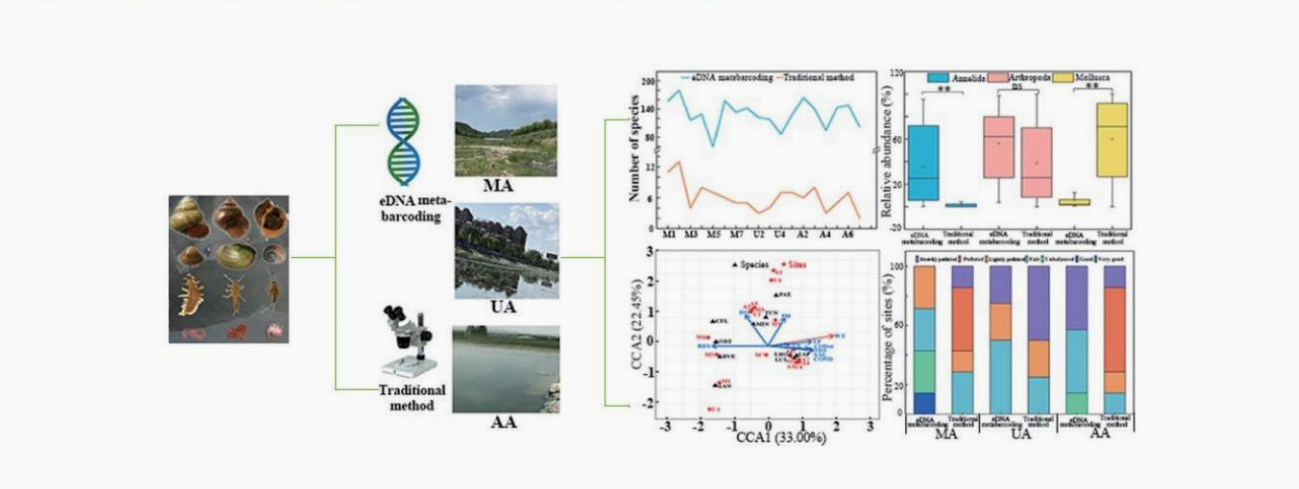In this study, eDNA technology and traditional survey methods were used to identify the diversity of river bottom invertebrates in the Beijing-Tianjin-Hebei region of China. A total of 395 invertebrate species were detected by the two methods, involving 6 phyla, 27 orders, 94 families and 222 genera. However, the detection rate of eDNA technology was significantly higher than that of traditional survey methods at each sampling point, especially for species of Annelida. In addition, the study also showed that the detection of invertebrate diversity by eDNA technology could clearly distinguish the differences in community composition in different regions, and the detected invertebrate animal composition was significantly correlated with water quality, revealing the application potential of eDNA technology in freshwater ecological environment monitoring.






